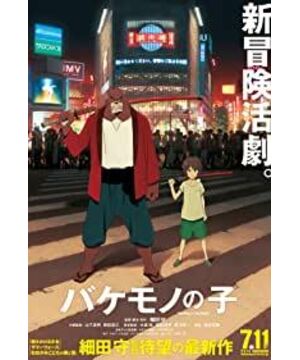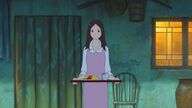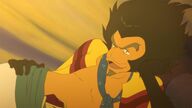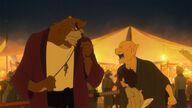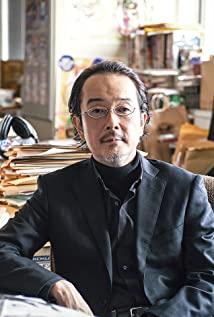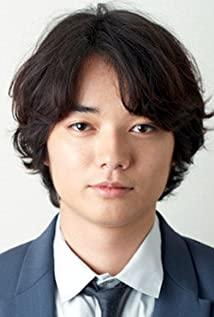Author: Van
's long-awaited original feature-length animated film "Son of the Monster", which was released in Japan on July 11, 2015. This is another new film made by Hosoda Morio after 3 years as the supervisor of works such as "The Girl Who Leapt Through Time", "Summer Wars", and "Wolf Son Rain and Snow". The film gathered many well-known actors and production teams headed by Yakusho Koji and Miyazaki Aoi. And won a number of awards including the 39th Outstanding Animation Work Award issued by the Japanese Academy of Sciences.
The film was released on BD on February 24, 2016, the week before, and I believe many viewers have already seen it. In the attached special documentary, it introduces in detail the front and behind the scenes of Hosoda's three-year sharpening of a sword, and how the related production team presents the fantasy world described by Hosoda to everyone.
In December 2014, Mamoru Hosoda broke the 3-year silence and announced that he would make a new film. He said at the press conference that he is already the father of a 2-year-old child, and people are always used to it. believes that children should be raised by their parents. In fact, children grow up through experience of all kinds of people and things. The theme of the latest work is "A Story About Children's Growth". This also contains a part of Hosoda's thoughts as a parent.
Director Hosoda entered the animation industry 24 years ago. After growing up as an original artist and performer, he began to get involved in theatrical animation. No matter "The Girl Who Leapt Through Time", "Summer Wars" or "Wolf Son Rain and Snow", the worldview depicted by Mamoru Hosoda always attracts topics. This time, Director Hosoda will challenge the world of monsters.
In July 2014, Director Hosoda was working on the storyboard drawing of "Son of the Monster" in an apartment, and he was drawing one of the protagonists of the movie: Xiong Toru.
It took more than 9 months to draw the storyboard alone. Whenever there is free time, Director Hosoda will visit Shibuya, Tokyo, which was chosen as the stage for the story, many times.
On-the-spot investigation in this city where young people come and go, and even went deep into the alleys, trying to restore a real Shibuya.
Director Hosoda's animation film production base is "スタジオ地図" (Map Studio), where the main stage scenes and various monsters of the film will be produced.
The production of the film brought together top-notch creatives from studios such as Ghibli. About 50 staff members challenged to restore the background of the real world together with Director Hosoda.
Yohei Takamatsu, the film's art supervisor, showed off the background that was based on the live action.
The reason for referring to the real-life production is to allow the audience to naturally integrate into it when watching the movie. At the same time, Director Hosoda also adhered to the tradition of painting the background with brushes and paints. Even the text on the gate of Shibuya Chuo-dori is written stroke by stroke based on real photos.
At the moment when computer drawing has become the mainstream, the hand-painted style implemented by Director Hosoda really makes people feel a touch of warmth while admiring its realism. Under the careful inspection of art supervisor Yohei Takamatsu, the completed background draft slowly presents a complete Shibuya style.
In addition, Director Hosoda also has strict requirements for space description. Shibuya's alleys are also required to appear as if they were actually walking in them. The finished background is taken to the CG production company for modeling and segmentation to create a three-dimensional space.
Supervisor Hosoda is constantly pursuing new image representations, such as several large scenes are also represented by advanced 3DCG technology.
In pursuit of realism, the costume design of the characters on the stage is also very particular. There are also finished costumes worn by the protagonist Xiong Che and Jiutai's backpack at the production site. Although "Son of the Monster" is only an animation, it has a designer responsible for costumes. Use the real object to confirm the action effect, and then draw the animation, so as to be closer to the real.
For the original artist who gives life to the animated characters, the level requirements are more stringent. The production site of "Son of the Monster" must have brought together the leading original artists in China.
Toshiyuki Inoue, who has participated in: "Ghost in the Shell", "AKIRA", "Hundred Days Red" and other basically all the theater versions of Japanese masterpieces, is known as an all-round original artist, and is personally known as "Karisuma" both inside and outside the industry (leader)".
This time, Toshiyuki Inoue was in charge of the first half of the final battle between Xiong Che and Zhuwangshan, and the climax of the last Kyuta cutting the whale.
In addition, one of the highlights of this movie is the fighting scene. Hamada Gao Xing was in charge of the first half of the market battle between Xiong Che and Zhuwangshan. Because it is necessary to restore the complex body movements according to the storyboard, the difficulty can be imagined, and a box full of waste manuscripts and drafts is tiring.
In addition, Ken Koike, a well-known animator overseas, was in charge of the sword fight scenes throughout the book.
There is a painting technique called "harmony" in director Hosoda's film painting. The role is to prevent static natural objects from being too buried in the background, such as the armor and helicopters in "Summer Wars" as shown below. It would be too prominent and unnatural to express as a painting, but just right to express it as "harmony".
In "Monster's Son", the chairs and flowers at the passage connecting the monster world and Shibuya use this technique. Flowers are an important presence in the film as a sign of exit.
The person in charge of this process is a professional worker from Ghibli: Noriko Takaya.
At the production site, intense color checks are carried out. In order to take into account the color balance with the surrounding environment, it is necessary to adjust the skin color of the characters in the play little by little.
With the advancement of the film production process, the CG work is also getting better. The CG company responsible for the child of the monster is Digital Frontier, and they are also doing their best to meet Hosoda's request. Ryo Horibe, who is the CG supervisor, said that Hosoda paid great attention to restoring the hand-painted style, and even CG should give people a feeling of "animation".
"The cherry blossoms just fall together in the same way, I feel a lack of emotion, can you move differently?" Supervisor Hosoda said during the inspection when examining the scene of the falling cherry blossoms.
"So what kind of falling can be considered emotional?" As a result, in order to give the falling petals emotion to achieve the effect of rendering the dialogue atmosphere of the characters, the staff designed the time and animation of the petals piece by piece. It took about 2 months on the petals.
In March 2015, Director Hosoda appeared in a compilation room in Tokyo and began to participate in the compilation work.
Shigeru Nishiyama, who has been the editor of Director Hosoda's works since "The Girl Who Leapt Through Time", described Mamoru Hosoda: "Since the debut of Director Hosoda's "Digimon theatrical Edition", I have felt that he is a A very powerful person who keeps incorporating new elements while maintaining traditional advantages, and is always evolving."
April 2015, in a recording studio in Tokyo. Supervisor Hosoda greeted the luxurious voice cast and gave them detailed voice guidance.
In the scene where Jiutai found her father and said she was going to leave the monster world, the performance of the seiyuu did not satisfy Supervisor Hosoda, so the supervisor personally went up to guide.
Hosoda insists on describing the conflict between Xiong Toru and Jiuta in the play because it includes his relationship with his father. "My father died when I was 30 years old. My father was a railway worker and he was very busy with work. He was basically raised by my mother. So I wanted to complete the emotional conflicts and contradictions that I once wanted to experience with my father in the film. I The movie is not about what I experience and what to do, but what I do when I want to experience it. This is my film. I didn't have children when I made "Wolf Children", but I really wanted a child at the time, so I made I took that piece." (laughs)
The music in the play is recorded at the same time as the dubbing. Following "Rain and Snow, Son of the Wolf", Mamoru Hosoda once again collaborated with world-renowned musician Masakatsu Takagi.
"The key point of this music production is to use bright music as a whole, but also to pay attention to the ancient style, and to have a taste of past life." Takagi Masakatsu said.
In order to set off the story, the production team specially invited tap dancer Kazuto Kumagai to capture the sound effects. The intense tap dance sound effects were recorded to reflect the tension between the protagonist Xiong Toru and Zhuwangshan when they faced each other.
Coming to the sound effect recording studio, the staff used various unimaginable props to achieve the realistic sound effect Hosoda required. Although this room really looks like a utility room, it's really a recording studio.
In the play, the sound effect used in Jiutai's practice is a real watermelon.
When Xiong Che was eating egg bibimbap, he actually used eggs to record sound effects.
In the most demanding sword fight scenes, Hosoda used almost all the sound effects that can be used to express swords, such as scabbards, tennis rackets, ski poles, and fishing rods.
In the part showing the broken scabbard, the sound of charcoal was started, but it didn't feel right.
Finally, the crab was used instead.
That's right, the sound of the scabbard breaking in the film is the sound of squeezing a crab.
Click to watch the video
So what was Director Hosoda thinking about after completing this animation with all his strength?
"People often say 'talent' or something, 'luck' or something. In fact, success is not just a personal reason. I have met all kinds of people along the way and learned all kinds of things from them. A child can become a (successful) 'person', and the same is true of making a film. Only by putting together various departments can a good film be made. A child grows up not only because of the guidance of his biological parents, but also because of various kinds of' Parents' teachings, and the film presumably wants to express that sentiment as well."
View more about The Boy and the Beast reviews


